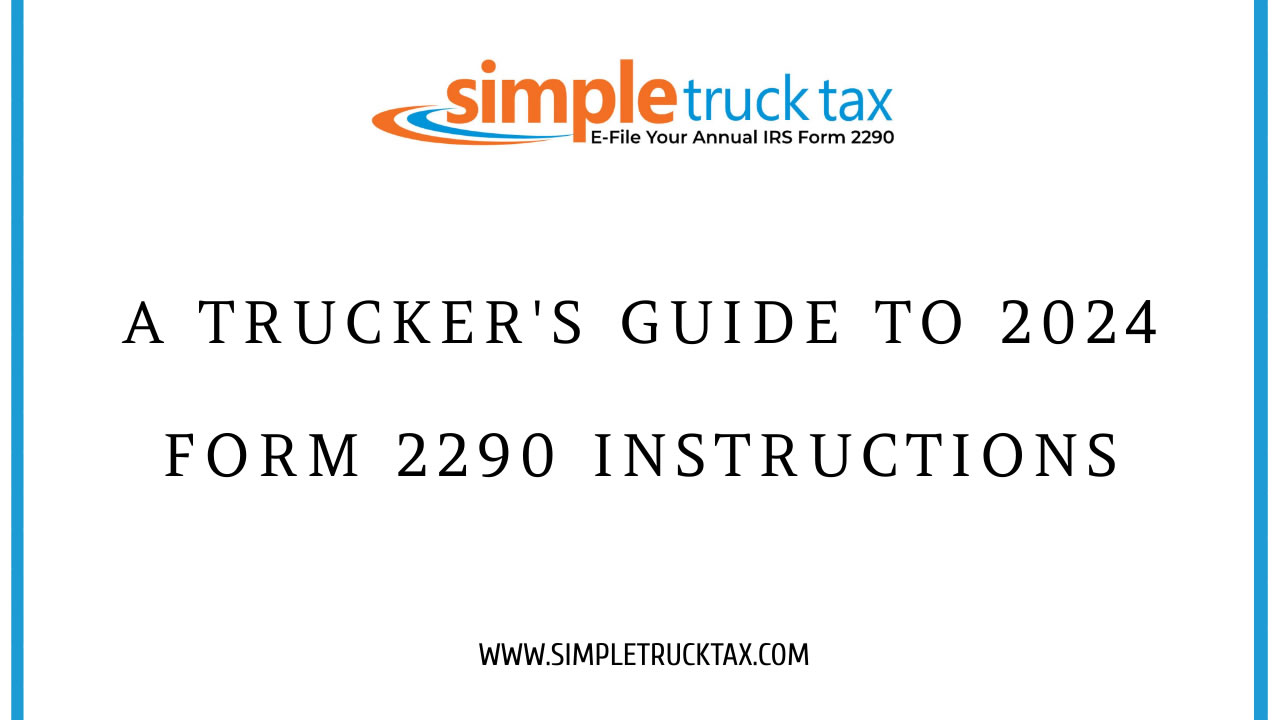
A Trucker's Guide to 2024 Form 2290 Instructions
Tax compliance is a familiar concept to truckers and fleet owners. An important aspect of this is the yearly filing of an IRS Form 2290 which is also regarded as the Heavy Vehicle Use Tax (HVUT). The 2024 Form 2290 instructions simplified in this guide will enable you to navigate the process effortlessly and effectively.
What is Form 2290?
Form 2290 is a tax form used by IRS for collection of taxes on heavy highway vehicles above 55,000 pounds. This tax assists in funding highway construction and maintenance. Every year, every qualifying trucker must file this form so as to stay compliant and escape penalties.
Key Changes for 2024
IRS occasionally updates its instruction to Form 2290. For example, these are the changes that one has got to remember:
- Updated Rates: Look out for any adjustments in tax rates or fees.
- New E-File Providers: Check if there are new options available in the list of authorized e-file providers.
- Deadline Adjustments: Be sure about changes in either filing deadlines or extensions.
Step-by-Step Instructions for Filing Form 2290
Filing Form 2290 involves several steps. Here’s a detailed guide to help you through the process:
Gather Necessary Information:
- Vehicle Identification Number (VIN): Verify that each vehicle has an accurate VIN.
- Gross Weight: Determine taxable gross weight per vehicle.
- EIN: Ensure that you have an Employer Identification Number (EIN); Social Security Numbers are not accepted here.
Choose a Filing Method:
- E-File: Considered faster and more convenient; choose from authorized e-file providers only!
- Paper File: Slower and not as convenient; can be used if you have less than 25 vehicles.
Complete the Form:
- Part I: Indicate your EIN, business name, and address, and put the month in which the vehicle was first used.
- Part II: Compute the tax based on weight and use of vehicle.
- Schedule 1: Each vehicle’s VINs and other necessary details have to be filled out here.
Pay the Tax:
- Electronic Funds Withdrawal (EFW): Pay directly from your bank account.
- Electronic Federal Tax Payment System (EFTPS): Enrollment is required beforehand.
- Credit or Debit Card: Could be an option provided by certain e-file providers.
- Check or Money Order: If you are filing a paper return
Submit the Form:
- E-File: Submit online through your provider; you will get Schedule 1 electronically after processing!
- Paper File: Mail completed form with payment to IRS; expect longer processing times
Receive Schedule 1:
- E-File: Immediately received after submission.
- Paper File: It takes several weeks for it to come by mail.
Important Deadlines
In 2024, August 31st is the key due date for filing Form 2290. If any month other than July is when your vehicle was first-used, then you must file before end of the next succeeding month. Mark these dates on your calendar to avoid penalties during that period.
Tips for a Smooth Filing Process
- Double-Check Information: Ensure all VINs and other details are accurate so as to prevent any delay in processing of your forms.
- File Early: Avoid last-minute issues by filing well before the deadline.
- Keep Records: Make sure to maintain copies of all filings and confirmations for at least three years.
- Keep up to date: Regularly check the IRS updates or consult a tax professional for any changes in the process.
Mistakes to Avoid
- Wrong VINs: Ensure you check every VIN to avoid mistakes.
- Missed Deadlines: File by due dates to evade penalties.
- Incorrect Gross Weight: Ensure that you properly calculate the taxable weight.
- Using an SSN Instead of EIN: Always use an EIN.
Filling out Form 2290 might seem like a daunting task, but having knowledge about it and adhering to the 2024 instructions can make it easier. In order to remain compliant either go for e-filing which is fast and convenient or paper file if you have few vehicles: this is crucial for your trucking business! Use this step-by-step guide when filing Form 2290, so that no impediments happen with respect to taxes and your fleet keeps rolling on highways as usual.
Note: For more information, visit IRS website